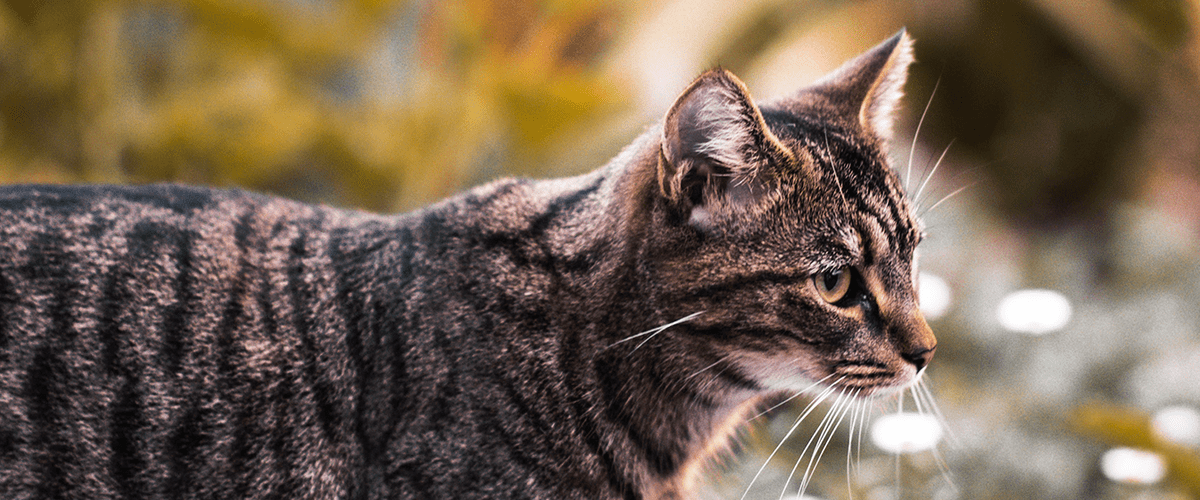
Updated October 6, 2022 – Blood clotting is an important survival mechanism for both people and pets. Without it, any small bump or cut could be fatal. However, blood clots that form when they shouldn’t can be dangerous and even life-threatening.
An abnormal clot can travel to any part of the body where it can lodge in a blood vessel, cutting off the blood supply to the affected area. If a clot is small, the injury might go unnoticed, but if the blood clot is big enough, it can cause serious or permanent damage, even sudden death.
Any animal can develop an abnormal blood clot, but the problem is especially significant for cats with heart disease. All cat caretakers need to know how these blood clots form to protect their cats and be ready to act if they suffer from a blood clot formation.
Blood Clotting System Has Two Main Processes
The blood clotting system is a complex but amazing process that is constantly on alert to stop any type of bleeding almost anywhere in the body. A brief overview of how this system works is important for understanding the different treatment options available to stop blood clots from forming.
It’s tempting to think of coagulation as one process, but there actually are several components and steps to the blood clotting system. We can simplify a complex process into two main pieces:
- Primary hemostasis – the end result of this process is the formation of a platelet plug. This plug forms quickly after injury and is the body’s attempt to temporarily stop bleeding.
Platelet plugs are beneficial but they’re not super strong. That’s where the next step of the process of stopping bleeding comes in.
- Secondary hemostasis – special proteins known as coagulation factors are triggered to become activated, ultimately leading to the production of fibrin which binds to the platelets in the plug to strengthen the plug, resulting in a blood clot.
An interesting aspect of the blood clotting system is that even as a clot is strengthening, other factors are stimulated to begin to break down the clot, a process known as fibrinolysis. The two processes provide a balance between clot formation and subsequent break-down during healing.
Treatment for Blood Clots
Many people are familiar with medications often referred to as “blood thinners.” These drugs are used to prevent excessive blood clot formation, especially in diseases where abnormal blood clot development can lead to a stroke.
While we don’t use the term “stroke” in veterinary medicine since the processes leading to this condition are not the same as in people, pets have benefited from the large array of medications developed for people.
Some medications alter platelet function by making them less “sticky.” Low dose aspirin works this way as does clopidogrel (also known as Plavix).
Other medications target secondary hemostasis. Drugs in this category include warfarin (coumadin), rivaroxaban (Xarelto) and apixaban (Eliquis).
Another type of drug used extensively in human medicine is “clot-busters,” drugs used as an emergency treatment for people with strokes. While these medications have proven remarkably effective in humans, their use in veterinary patients hasn’t been as promising and are associated with serious side effects.
Causes of Blood Clots
It’s obvious why a laceration or injury can stimulate blood clotting. But other diseases, such as heart disease, also can trigger blood to start clotting inappropriately. Heart disease can cause blood to flow abnormally, allowing time for platelets to stick together. Other diseases known to predispose dogs and cats to clot formation include diabetes, heartworm disease, pancreatitis and immune-mediated hemolytic anemia. For reasons that remain unclear, these diseases also make platelets more likely to clump together.
Abnormal clot formation is a serious complication in cats with hypertrophic cardiomyopathy, the most common feline heart disease. These often-life-threatening clots are called arterial thromboembolisms, or ATEs, and can block the blood supply to a limb or organ.
Our Investment in ATE Research
Morris Animal Foundation has invested just over $1M in 21 studies to investigate ATE and blood clotting in cats, from understanding more about how clots form to new treatments.
One of our earliest studies was the FATCAT project. In this groundbreaking study, Dr. Daniel Hogan’s team at Purdue University showed that clopidogrel was better than aspirin in preventing additional clot formation in cats that survived ATE. The results changed how veterinarians treat cats – not only those that have survived ATE, but also those at risk for clots – saving thousands of lives.
Clopidogrel has been a game changer when it comes to treating cats with blood clots, but some cats don’t respond as well to the drug as others. Dr. Josh Stern, leading a Foundation-funded team at the University of California, Davis, set out to learn why.
“My work has helped me learn that when it comes to cats, this isn’t going to be a one-size-fits-all with certain drug therapies,” said Dr. Stern.
To develop a better understanding of those individual differences, the team is looking at the genetics underlying a cat’s response – or lack of response – to clopidogrel, the most common medication used to treat cats with ATE. What they learn may support a new, individualized approach to veterinary medicine that, in the future, would include assessing the genetic make-up of a cat. Genetic panels could become as common as running a routine blood panel and would only need to be done once in a cat’s life!
Researchers at the University of Georgia are taking a different approach to treating ATE. They’re recruiting cats with a history of ATE to join a study testing rivaroxaban versus clopidogrel to prevent another episode of ATE. Their goal is to add more tools for veterinarians to use for clot prevention in cats with heart disease. The study is concluding soon and we can’t wait to see what this team found!
ATE remains a serious threat to cats and is a top research focus for the Foundation. Our funded researchers are committed to stopping clots before they endanger your cat. Check out our studies on heart disease in cats and take a deep dive into ATE featuring Dr. Josh Stern, or learn more about hypertrophic cardiomyopathy with Dr. Elizabeth Rozanski of Tufts University, on our Fresh Scoop podcast!




